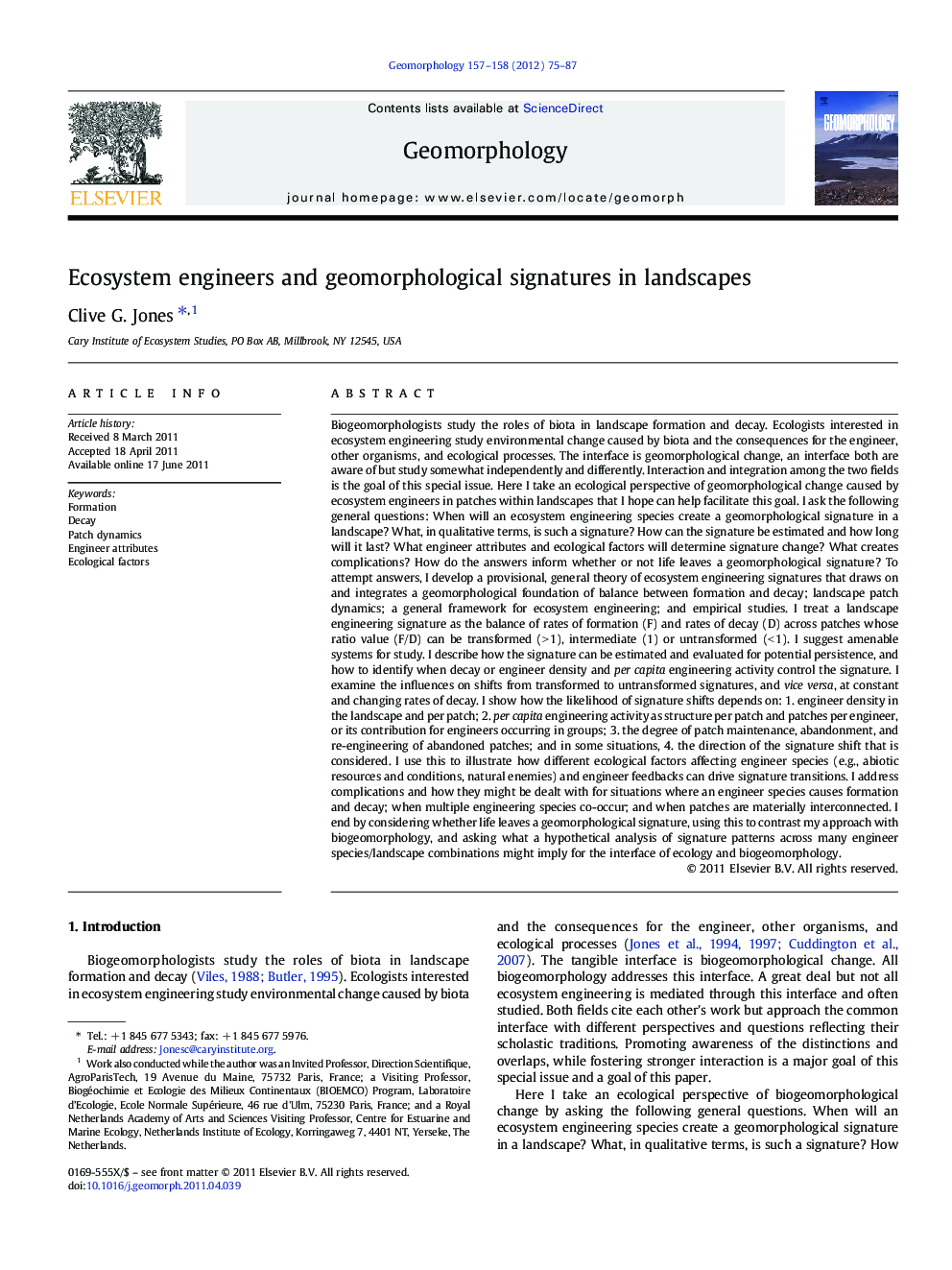| کد مقاله | کد نشریه | سال انتشار | مقاله انگلیسی | نسخه تمام متن |
|---|---|---|---|---|
| 4685234 | 1635480 | 2012 | 13 صفحه PDF | دانلود رایگان |

Biogeomorphologists study the roles of biota in landscape formation and decay. Ecologists interested in ecosystem engineering study environmental change caused by biota and the consequences for the engineer, other organisms, and ecological processes. The interface is geomorphological change, an interface both are aware of but study somewhat independently and differently. Interaction and integration among the two fields is the goal of this special issue. Here I take an ecological perspective of geomorphological change caused by ecosystem engineers in patches within landscapes that I hope can help facilitate this goal. I ask the following general questions: When will an ecosystem engineering species create a geomorphological signature in a landscape? What, in qualitative terms, is such a signature? How can the signature be estimated and how long will it last? What engineer attributes and ecological factors will determine signature change? What creates complications? How do the answers inform whether or not life leaves a geomorphological signature? To attempt answers, I develop a provisional, general theory of ecosystem engineering signatures that draws on and integrates a geomorphological foundation of balance between formation and decay; landscape patch dynamics; a general framework for ecosystem engineering; and empirical studies. I treat a landscape engineering signature as the balance of rates of formation (F) and rates of decay (D) across patches whose ratio value (F/D) can be transformed (> 1), intermediate (1) or untransformed (< 1). I suggest amenable systems for study. I describe how the signature can be estimated and evaluated for potential persistence, and how to identify when decay or engineer density and per capita engineering activity control the signature. I examine the influences on shifts from transformed to untransformed signatures, and vice versa, at constant and changing rates of decay. I show how the likelihood of signature shifts depends on: 1. engineer density in the landscape and per patch; 2. per capita engineering activity as structure per patch and patches per engineer, or its contribution for engineers occurring in groups; 3. the degree of patch maintenance, abandonment, and re-engineering of abandoned patches; and in some situations, 4. the direction of the signature shift that is considered. I use this to illustrate how different ecological factors affecting engineer species (e.g., abiotic resources and conditions, natural enemies) and engineer feedbacks can drive signature transitions. I address complications and how they might be dealt with for situations where an engineer species causes formation and decay; when multiple engineering species co-occur; and when patches are materially interconnected. I end by considering whether life leaves a geomorphological signature, using this to contrast my approach with biogeomorphology, and asking what a hypothetical analysis of signature patterns across many engineer species/landscape combinations might imply for the interface of ecology and biogeomorphology.
► I develop a theory of geomorphological signatures created by ecosystem engineers.
► Engineer formation rate/decay rate, across patches, defines a landscape signature.
► Engineer attributes and decay forces determine signature sensitivity to change.
► Three general engineer attributes determine signature sensitivity.
► The findings inform the degree to which life creates a geomorphological signature.
Journal: Geomorphology - Volumes 157–158, 1 July 2012, Pages 75–87